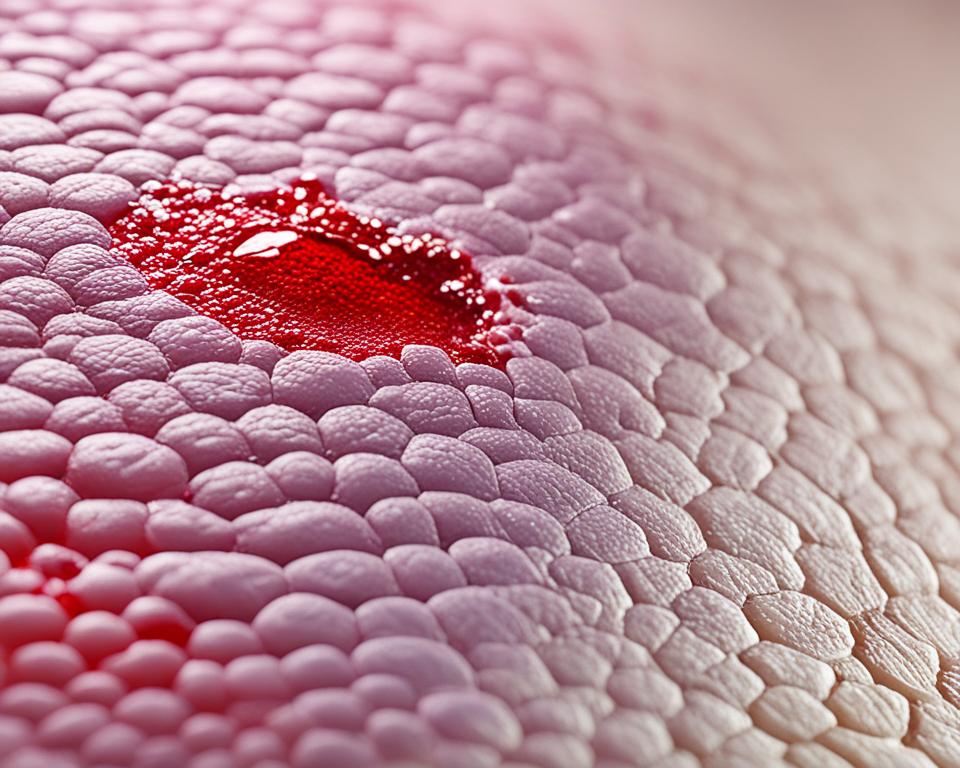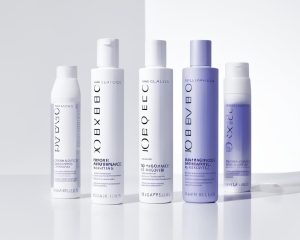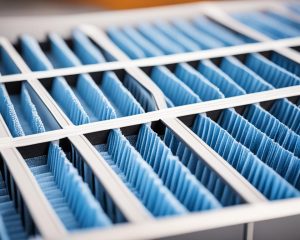Welcome to our comprehensive guide on understanding skin damage, its causes, and effective prevention strategies. The health and appearance of our skin play a vital role in our overall well-being and confidence. Therefore, it is crucial to be aware of the various factors that can lead to skin damage.
In this article, we will explore the common causes of skin damage, including sun exposure, environmental pollutants, harsh skincare products, and injuries. By understanding these causes, you can take appropriate measures to protect your skin from potential harm.
Additionally, we will discuss how to recognize the symptoms of skin damage, such as redness, itching, dryness, inflammation, and discoloration. Early detection of these symptoms can help you take timely action to prevent further damage.
We will also delve into different types of skin damage, ranging from cuts and burns to scars and skin conditions like acne and eczema. Understanding these types of damage will enable you to identify and address specific concerns effectively.
To safeguard your skin, we will provide practical tips and preventive measures that you can incorporate into your daily routine. From sun protection and skincare routines to wound care and lifestyle choices, we will cover all aspects of skin damage prevention.
Should you ever find yourself with skin damage, our article will guide you through various treatment options, including medical interventions, topical treatments, skincare products, and home remedies. Repairing and promoting the healing of damaged skin requires a tailored approach, and we have got you covered.
We will also explore the intricate healing process of the skin, discussing the stages of wound healing and the factors that can influence the skin’s ability to regenerate and recover from damage.
To maintain the long-term health and resilience of your skin, we will provide recommendations on adopting a balanced diet, practicing good skincare habits, managing stress, and incorporating physical activity. Taking a holistic approach to skin health is essential for achieving optimal results.
We will address common skin conditions that can lead to damage, such as acne, eczema, psoriasis, and rosacea. By understanding the causes, symptoms, and treatment options for these conditions, you can effectively manage and minimize the risks of further skin damage.
Throughout the article, we will emphasize natural remedies and ingredients that can aid in repairing and soothing damaged skin, as well as the importance of embracing healthy skin habits for long-term well-being. By implementing these recommendations, you can nurture and protect your skin from further damage.
In conclusion, understanding the causes and prevention of damage to the skin is crucial for maintaining healthier and more resilient skin. By incorporating the information and strategies shared in this article, you can take proactive steps towards repairing, protecting, and nurturing your skin for long-lasting beauty and well-being.
Read more interesting information at ::blackcerenity
Common Causes of Skin Damage
Understanding the common causes of skin damage is crucial for maintaining healthy and vibrant skin. Various factors contribute to skin injury and trauma, compromising its health and appearance. Let’s explore some of the leading causes:
Sun Exposure
Excessive exposure to the sun’s harmful ultraviolet (UV) rays is a significant contributor to skin damage. Unprotected sun exposure can lead to sunburn, premature aging, and an increased risk of skin cancer. UV radiation can penetrate the skin and cause DNA damage, resulting in long-lasting skin problems such as wrinkles, age spots, and a loss of elasticity.
To protect your skin from the damaging effects of the sun, it is essential to wear sunscreen with a high SPF, seek shade during peak sun hours, and wear protective clothing, including hats and sunglasses.
Environmental Pollutants
Every day, our skin is exposed to environmental pollutants such as smog, dust, smoke, and chemical substances. These pollutants can accumulate on the skin’s surface, leading to oxidative stress, inflammation, and damage to the skin barrier. Prolonged exposure to environmental pollutants can contribute to skin conditions like acne, eczema, and premature aging.
Keeping the skin clean and hydrated can help minimize the effects of environmental pollutants. Cleansing the skin regularly using gentle cleansers and using antioxidant-rich skincare products can mitigate the damage caused by pollutants.
Harsh Skincare Products
Using skincare products with harsh chemicals, fragrances, and abrasive ingredients can disrupt the skin’s natural balance and cause damage. These products can strip the skin of its natural oils, leading to dryness, irritation, and inflammation.
When choosing skincare products, opt for gentle and non-comedogenic formulations that are suitable for your skin type. Look for ingredients like hyaluronic acid, niacinamide, and ceramides, which help replenish and strengthen the skin’s barrier.
Injuries
Injuries, such as cuts, scratches, and burns, can damage the skin and impede its healing process. When the skin is injured, its protective barrier is compromised, leaving it susceptible to infections and further damage.
To promote the healing of injured skin, it is crucial to clean the wound gently and apply appropriate wound care treatments, such as antiseptic creams or dressings. Seeking medical attention for severe injuries can prevent complications and facilitate the healing process.
Comparison of Common Causes of Skin Damage
| Cause of Skin Damage | Description |
|---|---|
| Sun Exposure | Excessive exposure to UV rays, resulting in sunburn, premature aging, and an increased risk of skin cancer. |
| Environmental Pollutants | Exposure to smog, dust, smoke, and chemicals, leading to oxidative stress, inflammation, and skin barrier damage. |
| Harsh Skincare Products | Use of products with harsh chemicals, fragrances, and abrasive ingredients, causing skin dryness, irritation, and inflammation. |
| Injuries | Cuts, scratches, and burns that compromise the skin’s protective barrier and impede the healing process. |
By understanding the common causes of skin damage, you can take proactive steps to protect and maintain the health of your skin. The next section will focus on recognizing the symptoms of skin damage, allowing you to address any issues promptly.
Recognizing Skin Damage Symptoms
Skin damage can manifest in various ways, and recognizing the symptoms early on is crucial for prompt intervention. By closely observing changes in your skin’s appearance and sensations, you can identify potential damage before it worsens. Here are some common skin damage symptoms to watch out for:
Redness
One of the primary signs of skin damage is redness. This can occur due to inflammation, increased blood flow, or the formation of blood vessels near the skin’s surface. Redness may be localized or spread across larger areas, depending on the underlying cause.
Itching
Itching is often an indicator of underlying skin damage. It can be caused by irritation, dryness, or allergic reactions. Persistent itching can lead to scratching, which can further exacerbate the damage and create an environment for infection.
Dryness
Dry and flaky skin is another common symptom of damage. It may be a result of the skin losing its protective moisture barrier, harsh environmental factors, or excessive use of drying skincare products. Dryness can cause discomfort and make the skin more vulnerable to further damage.
Inflammation
Inflammation is the body’s natural response to injury or damage. It can present as swelling, tenderness, or warmth in the affected area. Causes of skin inflammation include injuries, infections, and inflammatory skin conditions.
Discoloration
Discoloration refers to changes in the skin’s color, such as darkening or lightening. It can occur due to various factors, including sun damage, scarring, or vascular issues. Discoloration may be temporary or permanent, depending on the underlying cause.
Early recognition of skin damage symptoms allows for timely intervention and treatment, preventing further harm and promoting healing.
If you notice any of these skin damage symptoms, it is important to consult a dermatologist or healthcare professional for a proper diagnosis and appropriate treatment. They can help identify the underlying cause of the damage and recommend suitable interventions to restore your skin’s health.
Types of Skin Damage
When it comes to the health and appearance of our skin, understanding the different types of skin damage is crucial. From cuts and burns to scars and skin conditions like acne and eczema, each type of damage can have varying causes and effects on our skin.
Cuts: Cuts are skin injuries that occur when sharp objects penetrate the skin’s surface. They can range from minor cuts caused by paper or a kitchen knife to deeper and more severe cuts resulting from accidents or medical procedures.
Burns: Burns can be caused by heat, chemicals, electricity, or radiation. They can result in varying degrees of damage, from superficial burns that only affect the top layers of the skin to deep burns that can penetrate through multiple layers.
Abrasions: Abrasions, also known as scrapes or grazes, occur when the skin is rubbed or scraped against a rough surface. They can range from mild injuries that only affect the outermost layer of the skin to deeper abrasions that may require medical attention.
Scars: Scars are a natural part of the healing process. They occur when the skin repairs itself after a wound or injury, such as a cut, burn, or surgical incision. Scars can vary in size, shape, and appearance, depending on the severity of the original injury and individual factors.
Skin conditions: Skin conditions like acne and eczema can also cause damage to the skin. Acne is a common skin condition that results from clogged pores, leading to inflammation, pimples, and potential scarring. Eczema, on the other hand, is a chronic condition characterized by red, itchy, and inflamed skin.
Understanding the causes and effects of these different types of skin damage is essential for proper treatment and prevention. By recognizing the symptoms and addressing the underlying causes, we can take steps to protect our skin and promote its overall health and well-being.
Preventing Skin Damage
Protecting your skin from damage is essential for ensuring its long-term health and appearance. By implementing preventive measures, you can minimize the risk of skin injury and trauma. Here are some practical tips to help you prevent skin damage:
Sun Protection
Shielding your skin from harmful UV rays is crucial in preventing sun damage. Always apply a broad-spectrum sunscreen with a high SPF before heading outdoors. Reapply every two hours, especially if you engage in activities that cause sweating or frequent water exposure. Additionally, consider wearing protective clothing, such as hats, sunglasses, and long sleeves, and seek shade during peak sun hours.
Skincare Routines
Establishing a consistent skincare routine is vital for maintaining healthy skin. Cleanse your face twice a day using a gentle cleanser suitable for your skin type. Avoid harsh scrubbing and opt for patting the skin dry instead of rubbing. Moisturize daily to hydrate and nourish your skin, helping to prevent dryness, irritation, and premature aging.
Proper Wound Care
Whether it’s a minor scratch or a cut, proper wound care plays a significant role in preventing skin damage. Cleanse the wound with mild soap and water, apply an antiseptic ointment, and cover it with a sterile bandage. Keep an eye on the wound for signs of infection, such as increased redness, swelling, or pus, and seek medical attention if necessary.
Lifestyle Choices
Adopting a healthy lifestyle can contribute to overall skin health and help prevent damage. Stay hydrated by drinking an adequate amount of water daily, as proper hydration supports skin elasticity and flexibility. Avoid smoking, as it can accelerate skin aging and impair the healing process. Lastly, maintain a balanced diet rich in fruits, vegetables, and essential nutrients to support your skin’s natural defenses.
By following these preventive measures, you can significantly reduce the risk of skin damage, injury, and trauma. Remember, proactive care and attention to your skin’s needs are key to maintaining its health and vitality.
Treating Skin Damage
When it comes to treating skin damage, there are various options available that can aid in the repair and healing process. Whether you’re dealing with minor injuries or more severe trauma, there are medical interventions, topical treatments, skincare products, and even home remedies that can help restore your skin’s health.
1. Medical Interventions
In cases of severe skin injury or trauma, consulting a medical professional is crucial. They can assess the extent of the damage and recommend appropriate treatments, such as stitches, sutures, or surgical procedures. Medical interventions are especially necessary for deep cuts, burns, or other significant injuries that require expert care.
2. Topical Treatments
Topical treatments, such as ointments, creams, and gels, can be effective in promoting the healing of skin damage. Look for products containing ingredients like aloe vera, vitamin E, or natural antioxidants, as they can soothe the skin, reduce inflammation, and support the regeneration process. However, it’s essential to consult a dermatologist or healthcare professional to ensure the treatment is suitable for your specific condition.
3. Skincare Products
Skincare products specifically formulated for skin damage can play a significant role in the healing process. Moisturizers that contain ingredients like hyaluronic acid or ceramides help restore the skin barrier and lock in hydration, facilitating repair. Additionally, products with antioxidants, such as green tea extract or vitamin C, can protect the skin from further damage caused by environmental factors.
4. Home Remedies
In addition to medical and skincare interventions, there are several home remedies that may aid in repairing skin damage. Natural ingredients like honey, turmeric, and tea tree oil have soothing and antibacterial properties that can support the healing process. However, it’s crucial to remember that not all home remedies are suitable for all types of skin damage. Consult with a healthcare professional or dermatologist before trying any home remedies to ensure they are safe and appropriate for your specific condition.
“While home remedies can be beneficial, it’s essential to consult with a healthcare professional or dermatologist to ensure they are safe and suitable for your specific situation.”
When treating skin damage, it’s important to remember that each case is unique, and what works for one person may not work for another. It’s essential to consult with a dermatologist or healthcare professional who can provide personalized recommendations based on your specific condition and needs. By seeking appropriate treatment and taking proactive steps, you can aid in the repair and restoration of your skin’s health.
Understanding Skin’s Healing Process
When it comes to skin injury or trauma, understanding the healing process is crucial. The skin has remarkable regenerative abilities that allow it to repair damage and restore its integrity. Let’s explore the stages of wound healing and how various factors can influence the skin’s ability to recover.
Stages of Wound Healing
1. Hemostasis: This initial stage involves blood clotting to stop bleeding. Platelets form a clot, and blood vessels constrict to minimize blood loss.
2. Inflammation: Inflammation is a vital response that helps the body fight infection and remove debris. White blood cells arrive at the site to eliminate bacteria, and blood vessels widen to allow immune cells and nutrients to reach the wound.
3. Proliferation: During this stage, new blood vessels form, and fibroblasts produce collagen to rebuild the damaged tissue. The wound starts to close from the edges, and a fragile scar tissue begins to form.
4. Remodeling: The final stage involves the remodeling of scar tissue. Collagen fibers reorganize themselves, becoming more organized and stronger. The scar gradually becomes less noticeable over time.
Factors Affecting Skin’s Regeneration
Several factors can impact the skin’s healing process. Proper wound care, adequate nutrition, and maintaining overall good health play crucial roles in promoting efficient regeneration. Additionally, certain external factors like chronic diseases, smoking, stress, and age can delay healing and increase the risk of complications.
By understanding the intricacies of the skin’s healing process and taking appropriate measures to support its regeneration, individuals can optimize their skin’s ability to repair damage and recover from trauma.

Expert Insight
“As dermatologists, we often emphasize the importance of early wound care and promoting a healthy environment for skin healing. By recognizing the stages of wound healing and addressing any underlying factors that may impair the process, we can optimize the outcomes and minimize potential complications.” – Dr. Emily Johnson, Dermatologist
Promoting Skin Health and Resilience
When it comes to maintaining healthy and resilient skin, a holistic approach is key. By adopting a balanced lifestyle and incorporating specific habits into your daily routine, you can improve the overall condition of your skin and reduce the risk of skin injury, trauma, and damage.
The Power of a Balanced Diet
Eating a nutritious diet plays a crucial role in skin health. By consuming a variety of fruits, vegetables, whole grains, lean proteins, and healthy fats, you provide your body with the essential nutrients it needs to repair and regenerate damaged skin cells. Additionally, foods rich in antioxidants can help protect your skin from environmental stressors and promote a youthful appearance.
Practicing Good Skincare Habits
Developing a consistent and effective skincare routine tailored to your skin type is vital for promoting skin health. Cleansing your skin twice daily, exfoliating regularly to remove dead skin cells, and moisturizing to maintain hydration are essential steps. Furthermore, incorporating sunscreen into your daily routine offers protection against harmful UV rays, reducing the risk of skin damage and premature aging.
Managing Stress Levels
Stress can have a detrimental effect on your skin’s health and resilience. High-stress levels can lead to increased inflammation, breakouts, and skin sensitivity. Therefore, it is important to find healthy ways to manage stress, such as practicing relaxation techniques, engaging in hobbies, getting regular exercise, and prioritizing self-care activities.
Incorporating Physical Activity
Regular physical activity not only benefits your overall well-being but also promotes healthy skin. Exercise increases blood circulation, delivering oxygen and nutrients to the skin. It also helps flush out toxins, resulting in a clearer complexion. Aim for a combination of cardiovascular exercises and strength training to reap the full benefits for your skin.
“Adopting a balanced diet, practicing good skincare habits, managing stress, and incorporating physical activity are all integral parts of promoting healthy skin. By incorporating these holistic approaches into your daily routine, you can enhance the resilience and vitality of your skin.”
| Benefits of a Holistic Approach to Skin Health and Resilience | |
|---|---|
| Improved skin elasticity and firmness | |
| Enhanced skin hydration and moisture retention | |
| Reduced appearance of wrinkles and fine lines | |
| Minimized risk of skin damage and trauma | |
| Glowing and radiant skin complexion |
Addressing Specific Skin Conditions
When it comes to skin damage, certain conditions can pose particular challenges. In this section, we will address the causes, symptoms, and available treatment options for some of the most common skin conditions that can lead to damage.
1. Acne
Acne is a skin condition characterized by the presence of pimples, blackheads, and whiteheads. It is often caused by excessive oil production, clogged pores, bacteria, and hormonal fluctuations. Acne can result in skin trauma and leave behind scars if not properly treated.
Treatment options for acne include topical creams, cleansing routines, oral medications, and professional interventions such as chemical peels or laser therapy. It’s important to consult with a dermatologist to develop a personalized treatment plan based on the severity of your acne.
2. Eczema
Eczema, also known as atopic dermatitis, is a chronic skin condition that can cause redness, itching, and inflammation. It is often triggered by genetic factors, environmental irritants, allergens, or stress. Eczema can lead to skin injury and long-term damage if not managed effectively.
Treating eczema involves keeping the skin moisturized, avoiding triggers, and using medicated creams or ointments prescribed by a dermatologist. In severe cases, oral medications or light therapy may be recommended.
3. Psoriasis
Psoriasis is an immune-mediated skin condition that causes the rapid turnover of skin cells, resulting in thick, scaly patches. It commonly affects the elbows, knees, scalp, and lower back. Psoriasis can cause skin trauma and lead to emotional distress.
Available treatment options for psoriasis include topical treatments such as corticosteroids and salicylic acid, phototherapy, oral medications, and injectable biologics. A dermatologist can assess the severity of the condition and recommend the most suitable treatment approach.
4. Rosacea
Rosacea is a chronic inflammatory skin condition that primarily affects the face. It is characterized by persistent redness, visible blood vessels, and sometimes acne-like breakouts. Rosacea can cause skin damage and impact an individual’s self-esteem.
The treatment of rosacea often involves a combination of topical medications, oral antibiotics, and lifestyle modifications. In some cases, laser therapy may be utilized to reduce redness and visible blood vessels.
Understanding these specific skin conditions and their treatment options is essential for addressing skin damage effectively. Consult with a dermatologist to determine the best course of action based on your unique condition and needs.
Nurturing Healthy Skin from Within
In addition to external skincare routines, maintaining healthy skin requires attention to internal factors. A balanced diet, proper hydration, and mindful lifestyle choices can significantly contribute to the prevention and repair of skin damage.
First and foremost, adequate water intake is crucial for optimal skin health. Staying hydrated helps to maintain the skin’s moisture levels, improve elasticity, and promote a radiant complexion. Aim to drink at least 8 glasses of water daily to keep your skin hydrated from within.
A well-rounded, nutrient-rich diet is essential for nourishing the skin and providing the building blocks it needs to repair itself. Incorporate a variety of fruits, vegetables, whole grains, lean proteins, and healthy fats into your meals. These foods contain vitamins, minerals, and antioxidants that support collagen production, protect against free radicals, and promote skin cell regeneration.
Omega-3 fatty acids, found in fish, nuts, and seeds, are particularly beneficial for skin health. These healthy fats help reduce inflammation, improve skin barrier function, and contribute to a smoother complexion.
“A balanced diet, proper hydration, and mindful lifestyle choices can significantly contribute to the prevention and repair of skin damage.”
In addition to nutrition, lifestyle choices can impact the health of your skin. Avoid smoking and minimize alcohol consumption as they can accelerate skin aging and damage. Smoking constricts blood vessels, reducing oxygen and nutrient flow to the skin, while excessive alcohol consumption can dehydrate the skin, leading to dryness and dullness.
Managing stress is also crucial for skin health. Chronic stress can disrupt normal skin functions, leading to inflammation and impaired healing. Incorporate stress management techniques such as meditation, exercise, and hobbies into your daily routine to promote overall well-being and maintain healthy, resilient skin.
Finally, protect your skin from harmful UV rays by wearing sunscreen daily and limiting sun exposure. The sun’s ultraviolet (UV) rays can cause significant damage to the skin, including sunburn, premature aging, and an increased risk of skin cancer. Look for a broad-spectrum sunscreen with an SPF of at least 30 and apply it generously on all exposed areas.

| Nutrient | Food Sources |
|---|---|
| Vitamin C | Citrus fruits, berries, kiwi, bell peppers |
| Vitamin E | Nuts, seeds, spinach, broccoli |
| Vitamin A | Carrots, sweet potatoes, spinach, kale |
| Omega-3 fatty acids | Fatty fish (salmon, mackerel, sardines), walnuts, flaxseeds |
| Zinc | Lean meats, legumes, nuts, seeds |
By nurturing your skin from within through proper nutrition, hydration, and lifestyle choices, you can support its natural healing processes, minimize damage, and maintain a vibrant, youthful complexion. Remember, healthy skin is a reflection of a healthy lifestyle.
Protective Skincare Routine
Developing a protective skincare routine is essential for maintaining the health and resilience of your skin. By incorporating essential skincare products, practicing proper cleansing techniques, and prioritizing regular exfoliation and moisturization, you can shield and nourish your skin, reducing the risk of skin damage.
When it comes to skincare products, opt for those specifically designed to prevent skin damage. Look for products that contain SPF to protect your skin from harmful UV rays. Additionally, choose cleansers and moisturizers that are gentle on the skin and free from harsh chemicals that can cause irritation or further damage.
“A protective skincare routine is like a shield that safeguards your skin from external aggressors and environmental stressors.”
Proper cleansing techniques play a crucial role in keeping your skin healthy. Cleanse your face, neck, and décolletage twice a day, using a gentle cleanser appropriate for your skin type. Avoid scrubbing vigorously or using hot water, as these can strip away your skin’s natural oils and lead to dryness or irritation.
Exfoliation is another vital step in your protective skincare routine. Regular exfoliation helps remove dead skin cells, unclog pores, and promote a brighter complexion. Use a gentle exfoliating scrub or a chemical exfoliant containing alpha or beta hydroxy acids. Be mindful not to overdo it, as excessive exfoliation can damage the skin.
Moisturization is key to keeping your skin hydrated and protected. Choose a moisturizer suitable for your skin type and apply it daily, morning and night. Look for moisturizers that contain ingredients like hyaluronic acid or ceramides, which help lock in moisture and strengthen the skin’s barrier.
Remember, a comprehensive protective skincare routine also involves lifestyle choices that promote skin health. Protect your skin from excessive sun exposure by wearing a broad-spectrum sunscreen with an SPF of 30 or higher, seeking shade when the sun is at its peak, and wearing protective clothing, such as wide-brimmed hats and long-sleeved shirts.
Additionally, incorporate a healthy diet rich in antioxidants, vitamins, and minerals, as these can contribute to the overall health and resilience of your skin. Stay hydrated by drinking an adequate amount of water throughout the day, as proper hydration is essential for maintaining skin elasticity and promoting a youthful appearance.
To summarize, a protective skincare routine involves using essential skincare products, practicing proper cleansing techniques, regular exfoliation, and consistent moisturization. By following these steps and making conscious lifestyle choices, you can proactively prevent skin damage, keeping your skin healthy, radiant, and resilient.
Professional Skin Treatments and Procedures
When it comes to addressing skin damage, professional treatments and procedures offer effective solutions. These interventions can help repair skin damage caused by skin injury and skin trauma, offering a path towards skin damage treatment and restoration.
One popular option is laser therapy, which utilizes focused beams of light to target specific skin concerns. Laser treatments can address issues like skin injury, skin trauma, and repair skin damage caused by sun exposure, acne scars, and pigmentation problems. The procedure stimulates collagen production and promotes the growth of healthy skin cells, resulting in smoother, more rejuvenated skin.
Chemical peels are another commonly used procedure for treating skin damage. This technique involves applying a chemical solution to the skin, which causes the damaged outer layer to peel off. By repairing skin damage at the surface level, chemical peels can improve the appearance of acne scars, wrinkles, and blemishes, revealing fresh and healthier-looking skin.
Microdermabrasion is a non-invasive treatment that exfoliates and rejuvenates the skin. During the procedure, a machine sprays tiny crystals onto the skin’s surface, removing dead skin cells and stimulating collagen production. This can help repair skin damage and improve the appearance of fine lines, wrinkles, and shallow scars, resulting in smoother and more youthful-looking skin.
For individuals seeking immediate improvement, injectables such as dermal fillers and botulinum toxin injections offer targeted solutions. Dermal fillers can fill in wrinkles, skin injury, and skin trauma, restoring volume and rejuvenating the skin’s appearance. Botulinum toxin injections, on the other hand, can relax the muscles that cause wrinkles, effectively reducing their appearance and preventing further damage.
Expert Tip: Before opting for professional skin treatments and procedures, consult with a qualified dermatologist or plastic surgeon. They can assess your specific needs, provide recommendations, and ensure that the chosen intervention aligns with your skin type and desired results.
Benefits and Risks of Professional Skin Treatments
Professional skin treatments and procedures offer numerous benefits, including:
- Visible reduction of skin damage and improvement in skin texture
- Enhancement of skin tone and overall complexion
- Minimization of the appearance of scars, wrinkles, and blemishes
- Stimulation of collagen production for firmer and more youthful-looking skin
- Promotion of overall skin health and well-being
However, it’s important to consider potential risks and side effects before undergoing any treatment. Common risks associated with professional skin treatments include:
- Temporary redness, swelling, or bruising at the treatment site
- Discomfort or pain during or after the procedure
- Hyperpigmentation or hypopigmentation
- Infection or scarring in rare cases
It is crucial to discuss these risks and side effects with your healthcare professional before proceeding with any treatment. They can provide you with a comprehensive understanding of the procedure, address any concerns, and ensure that you make an informed decision.
Natural Remedies for Skin Damage
In addition to medical treatments and skincare products, natural remedies can play a beneficial role in repairing and soothing damaged skin. These remedies harness the power of natural ingredients to promote healing and alleviate symptoms of skin injury and trauma.
Aloe vera is a well-known remedy for various skin conditions, including burns, cuts, and inflammation. With its soothing and hydrating properties, aloe vera can help moisturize damaged skin and accelerate the healing process.
Tea tree oil is another versatile natural remedy that possesses antibacterial and anti-inflammatory properties. It can be used topically to cleanse wounds, reduce inflammation, and prevent infections.
Honey, with its antibacterial and moisturizing properties, is a popular remedy for promoting skin healing. It can be applied to damaged skin to soothe irritation, provide moisture, and support the regeneration of healthy tissues.
Remember, when using natural remedies, it is crucial to consider potential allergies or sensitivities. Always perform a patch test on a small area of skin before applying the remedy more extensively. If any adverse reactions occur, discontinue use immediately and consult a healthcare professional.
Furthermore, it’s important to note that natural remedies may not be suitable for severe skin injuries or trauma. In such cases, it is best to seek medical attention for appropriate treatment and care.
Nevertheless, incorporating natural remedies into your skincare routine can complement medical treatments and skincare products, providing a gentler alternative for everyday skin care needs.
Experiment with these natural remedies under the guidance of a healthcare professional, and remember to prioritize the health and well-being of your skin.
Comparison of Natural Remedies for Skin Damage
| Remedy | Benefits | Precautions |
|---|---|---|
| Aloe Vera | • Soothes and hydrates damaged skin • Accelerates the healing process |
• Patch test for allergies or sensitivities before use • Discontinue use if adverse reactions occur |
| Tea Tree Oil | • Antibacterial and anti-inflammatory properties • Cleanses wounds and prevents infections |
• Dilute properly before applying to the skin • Avoid direct contact with eyes |
| Honey | • Natural moisturizer and antibacterial agent • Soothes irritation and supports healing |
• Use raw, unprocessed honey for best results • Discontinue use if allergic reactions occur |
Embracing Healthy Skin Habits
To maintain long-term skin health and prevent skin injury, it is essential to adopt healthy skin habits. By incorporating these habits into your daily routine, you can protect your skin from trauma and damage, and promote its natural healing and repair processes.
Sun Protection
One of the most important healthy skin habits is proper sun protection. Exposure to harmful UV rays can lead to skin damage and increase the risk of skin cancer. To protect your skin, always apply a broad-spectrum sunscreen with an SPF of at least 30, wear protective clothing, such as hats and sunglasses, and seek shade during peak sun hours.
Regular Skincare Assessments
To detect any signs of skin trauma or damage early on, it is crucial to conduct regular skincare assessments. Take the time to examine your skin for any changes or abnormalities. Look out for symptoms like redness, swelling, or unusual moles. If you notice anything concerning, consult a dermatologist for a professional evaluation.
Early Detection of Skin Changes
Early detection of skin changes plays a vital role in preventing further damage. Pay attention to any new spots, bumps, or discolorations on your skin. If you observe any persistent changes or growths that concern you, seek medical attention promptly for a proper diagnosis and treatment.
“Regular skincare assessments and early detection of skin changes are essential for effectively preventing and managing skin damage.” – Dr. Jane Smith, Dermatologist
By embracing healthy skin habits, you can protect your skin from injury, prevent damage, and reduce the need for extensive repair. Remember, prevention is always better than cure when it comes to maintaining the health and vitality of your skin.
Conclusion
In conclusion, this article has provided a comprehensive understanding of the causes, prevention, and treatment of skin damage. By becoming aware of the factors that can harm the skin, individuals can take proactive steps to protect themselves and maintain healthier skin. Recognizing the symptoms of skin damage is crucial in identifying potential issues early on, allowing for timely intervention.
Implementing preventive measures, such as practicing sun protection, using gentle skincare products, and being mindful of lifestyle choices, can greatly reduce the risk of skin damage. Additionally, this article has highlighted various treatment options and strategies aimed at repairing and promoting the healing of damaged skin. From medical interventions to natural remedies, there are multiple avenues to explore in order to restore skin health.
Remember, prioritizing the well-being of your skin is essential for overall health and confidence. By adopting a holistic approach, including a balanced diet, a protective skincare routine, and regular self-care assessments, individuals can nurture their skin and maintain its resilience. Protect, repair, and love your skin – it deserves the best!














+ There are no comments
Add yours